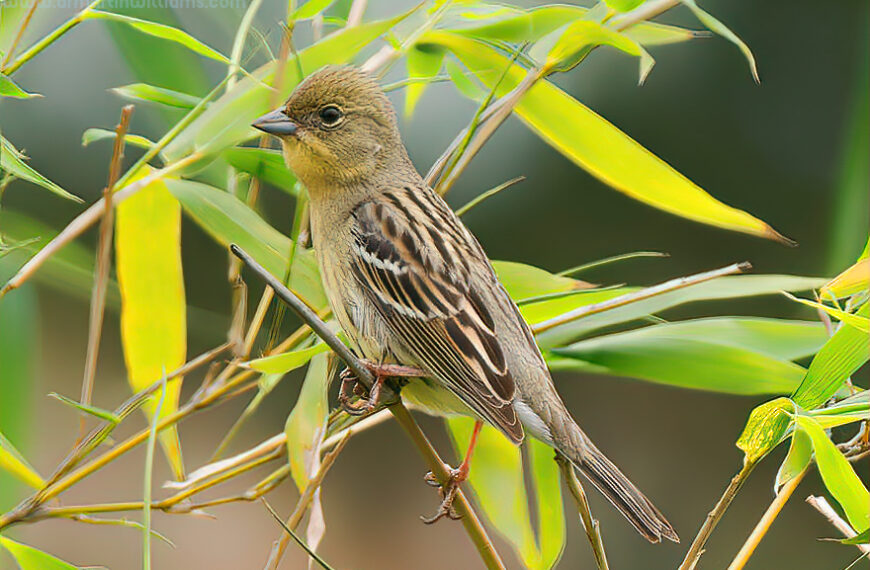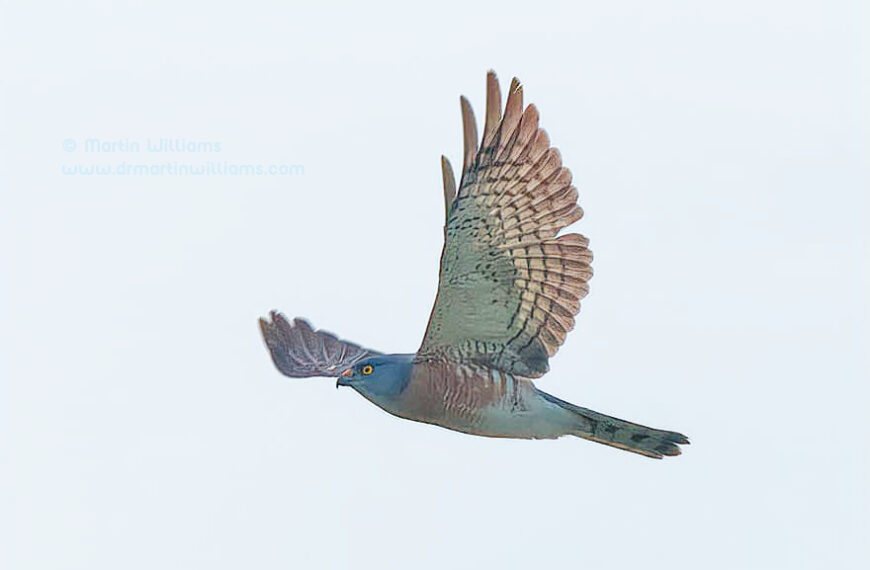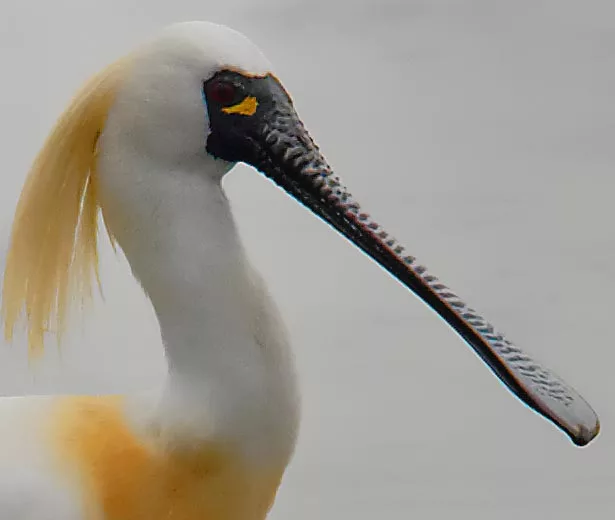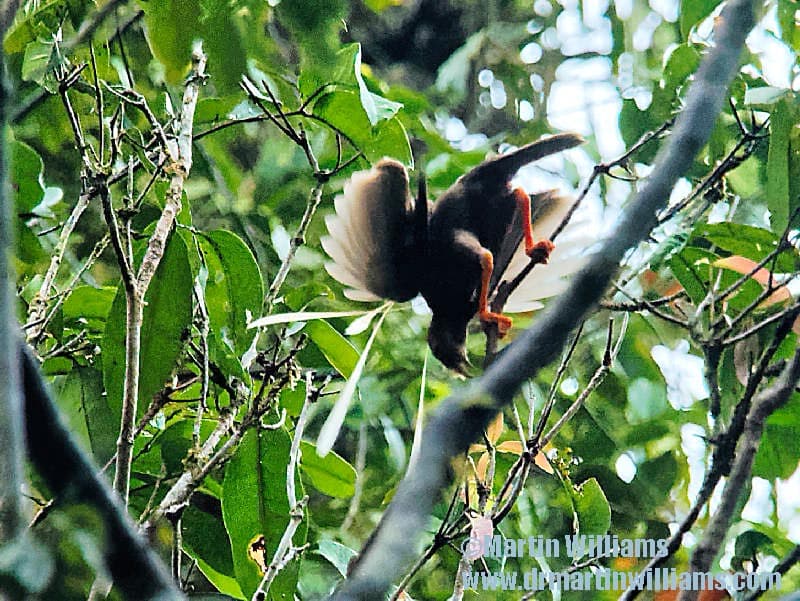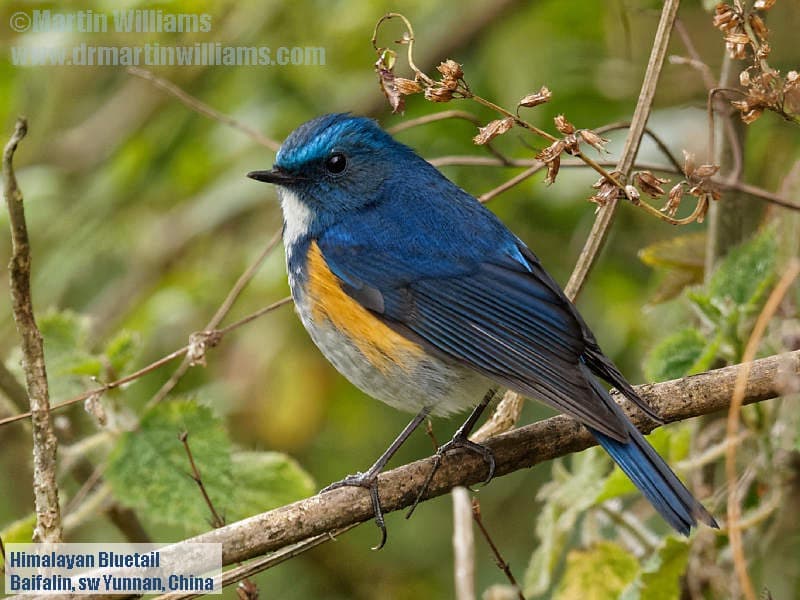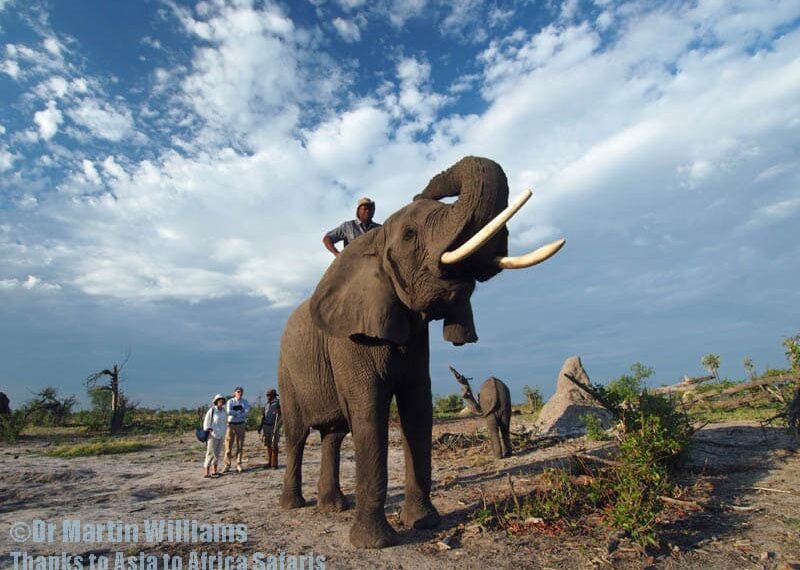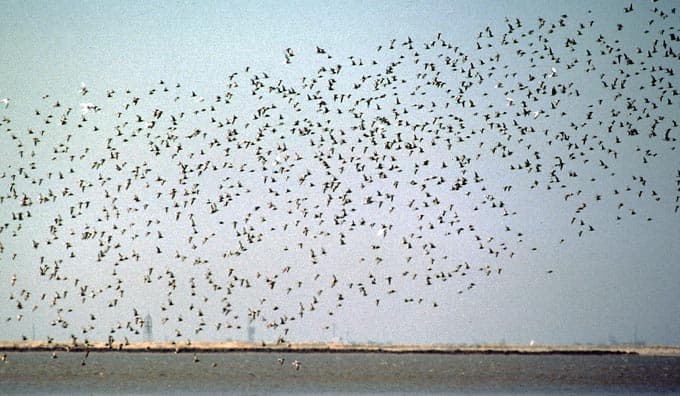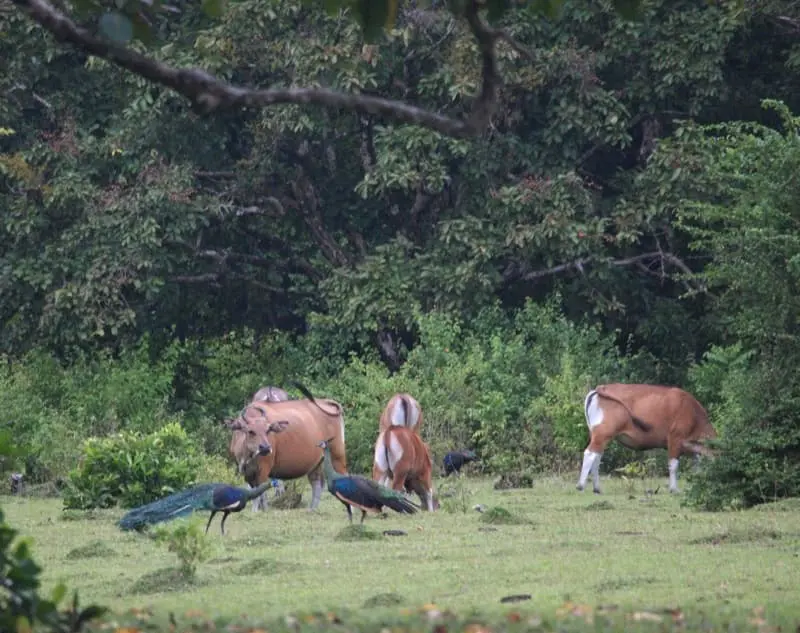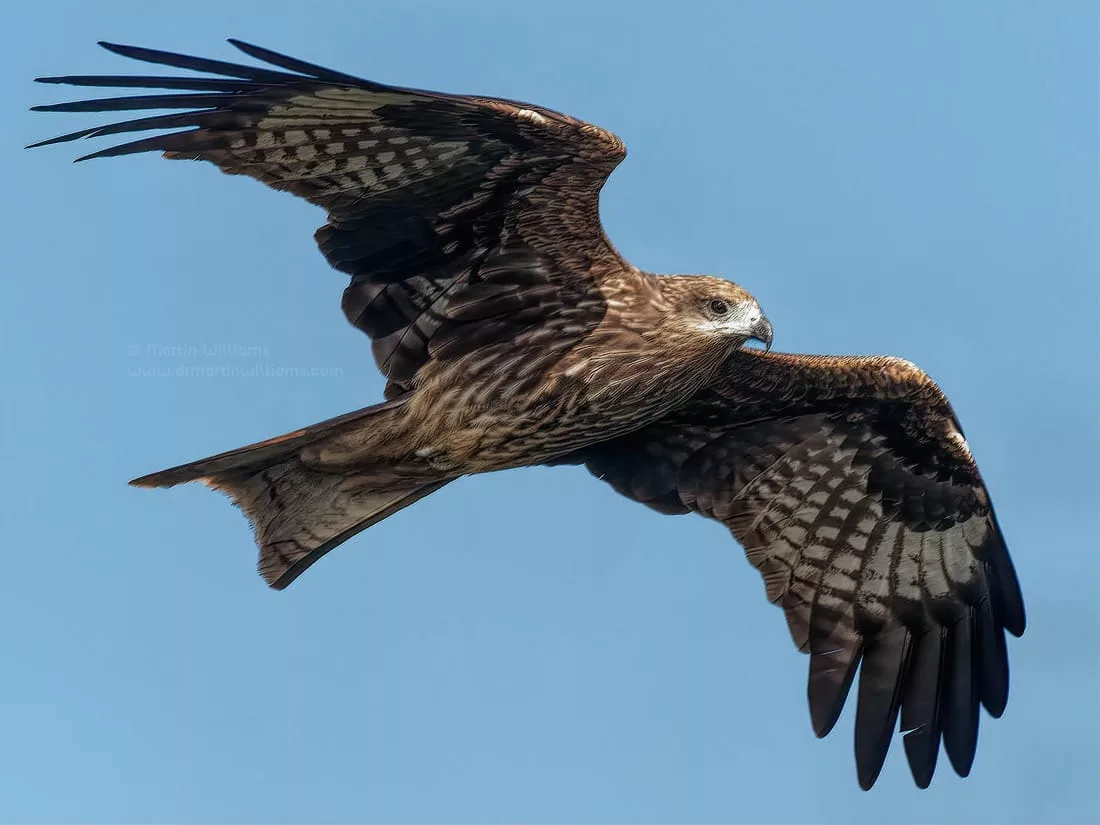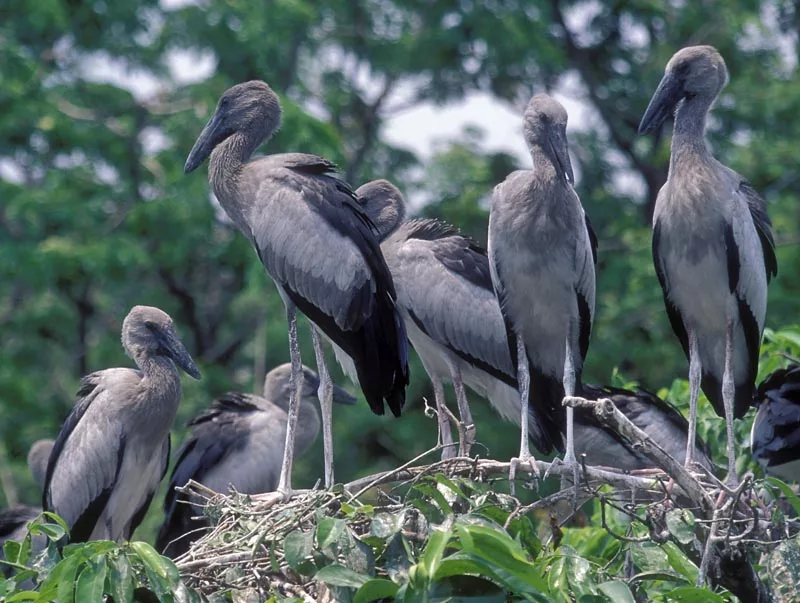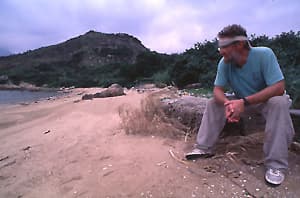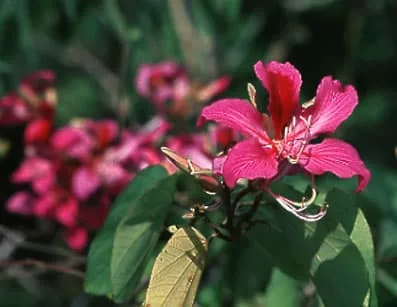Taman Negara – rainforest national park in Malaysia
 Breakfast with hornbills
Breakfast with hornbills
Early morning at Taman Negara Resort. I stand with a group of birdwatchers gathered by a cluster of chalets, and peer into a tree. Unperturbed by the resort staff and other early risers strolling below, various birds have arrived to snack on fruit. There are green pigeons, fairy bluebirds with iridescent blue backs, irrepressable bulbuls. And pied hornbills, which attract most attention.
Four of these large, improbable birds descend on the tree. They hop and bound along branches, then sidle up to clusters of fruit, move their bills in nearer as if to whisper to the tree, grab a fruit, toss it down their throats, then vault to another part of the tree.
Once most of the resort is up and about, the hornbills fly out from the tree. As if to ensure that late-risers also enjoy the show, they head for trees beside the restaurant, to cavort and trumpet in front of the breakfast crowd.
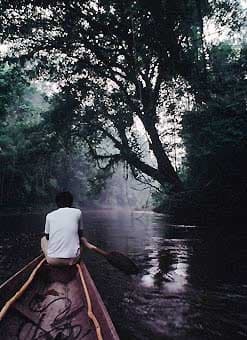
The resort lies on the south-eastern edge of Malaysia’s national park, known in Malay simply as Taman Negara — `national park’. With an area of 4,343 square kilometres, the park is over one-fifth the size of New Jersey. The dominant habitat is rainforest.
Rainforest which has been described as the oldest on earth — though in its early millenia flowering plants were yet to evolve. And which, for its size, may boast the highest biological diversity of any rainforest. Taman Negara is home to around 350 species of birds; the world’s tallest rainforest tree species, the tualung, is found here, so too the smallest rhinoceros, the Sumatran rhino, and the smallest races of the tiger and the Asian elephant.
While the early bird show is entertaining, the way to really experience the forest is by walking through it. Various trails lead from the resort; all are suitable for short walks, some are the start of tough `jungle’ treks, including the eight-day round trip to the 2,186-metre summit of Gunung Tahan, and one is a nature trail.
By following the nature trail circuit and referring to the accompanying booklet, I learn about trees and other plants. Various palms grow beneath the forest canopy; they include one with thorns you can pluck to produce something like musical notes. The bark of an ara bertih tree has been scratched by Orang Asili, the native people of the rainforest, who have used its sap as poison on blowpipe darts.
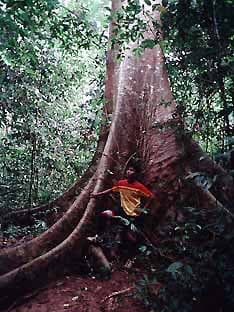
There is a tualung, which the booklet says is around 50 metres tall and has been growing at least 250 metres. By tualung standards, it is still an adoloscent — the tallest one yet recorded is in Sarawak, and rises 84 metres above the forest floor.
The bases of the tualung and other giants which dot the forest are massive, wide as a bus, with buttresses to support trunks that tower skywards, branch only after 20 metres or more, and become lost from view among the forest canopy. I see only few birds along the nature trail; the forest denizens are mostly elusive, and can make me feel bumbling as I walk about, unable to see the wildlife for the trees.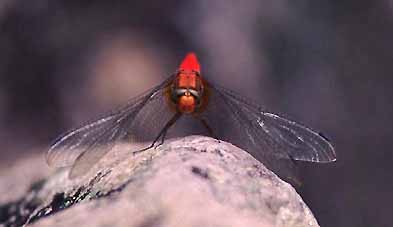
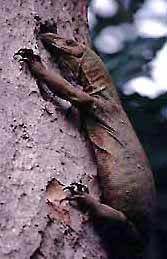
I would have to be very bumbling indeed to miss the crested fireback pheasants, which I first encounter during a stroll along the riverside. Two of them amble off the path as I approach, the red of their backs only just showing between the folded wings. Stout birds, roughly the shape of turkeys, they are deep blue, with white tail feathers and crests like once trendy hairstyles. Three banded leaf-monkeys leap through the branches as I pass by, one halting to watch me, then moving on; they are handsome, slightly built, with long tails, steely grey fur and dark, inquisitive faces.
Along another trail, grunts and snuffles announce the presence of wild pigs. Peering through the palms and saplings, I see two piglets with their mother. The pigs must be abundant around the resort, as I often see where they have been rooting. Bold, too; they enter the resort at night, and knock over waste bins to rummage for titbits. At times, a branch suddenly sways overhead, and I look up to see a squirrel. Or there might be a monitor lizard lazing by the path or walking, slow and deliberate, across the lawn in front of the chalets. But, like the firebacks and pigs, these are animals which have become used to visitors. Seeing more will require more time, effort — and luck. /p>
I am out before dawn one day, to climb the low hill beside the resort. At a lookout on the ridge, I rest, and hear animals I would very much like to see. White-handed gibbons. There are two families, several hundred metres apart. Each family’s adult male sings, a wild, wavering song that carries through the mists swirling between the trees. Though I stare in the direction of the nearest song, I fail to glimpse the gibbons, which soon move down, and away. I am disappointed not to see a gibbon but, long after I have left the hill, I shall remember the song, the forest’s haunting aria.
Birds, too, can be frustrating. Often, I know of them only through hearing mysterious whistles and warbles. I might walk without seeing a single bird, then find several are in view at once, as a mixed flock moves through, foraging in a `wave’. The members of one wave include a scarlet-rumped trogon, which perches on a low branch. Even when I lower my binoculars, his brilliant red seems to glow against the dark greens beyond. Another movement catches my eye, I watch a flycatcher as it chases insects, look back, and the trogon has gone, melted away into the forest.
Underground, there is more wildlife, including species adapted to life in caves. I squirm my way through the narrow entrance to one cave, which opens to a large cleft, with maybe 50 roundleaf bats roosting on a rock face. Another chamber holds more bats; some are flying, and flash ghost-like across an opening to the sky. Below an overhang sits a Malaysian giant toad, warty and lethargic. But I miss the cave racer, a non-venomous snake which hunts by waiting on ledges, and snatching bats as they fly past.
Taman Negara at night
The forest is home to many creatures of the dark. There are hides overlooking salt licks, where visitors can spend a night watching for Malay civets, barking deer, tapir, and — rarely — elephants or gaur, the wild cattle built like prize-fighters. Success is not guaranteed: during my night in a hide, I notice no mammals visiting the salt lick.
I do far better just walking near the resort at night, though the animals are not as dramatic as elephants or gaur. Panning my torch beam left and right, I watch for light reflected by animals’ eyes. Two bright lamps glow back at me; I look closer, and see a mouse deer. The rabbit-sized deer stands still, staring back at the light, then creeps off on thin, nervous legs, its eyes glowing like fierce orange coals in my beam. There are tiny white reflections too. I move in to check one out, and find a spider sitting on a broken tree stem. It is patterned brown and black, a camouflage that would make it hard to find in daylight, yet the darkness and torchlight reveal spiders by the score.
I notice a dull green glow from the darkness of the forest floor, and walk over to investigate. Three small discs of fungus grow on a fallen branch. In the torchlight, they are dull white, but when I move the beam off, I see their soft luminescence again. Maybe a beetle, attracted by the glow, will come along later, eat the fungi, and move off to inadvertently spread their spores.
I have been told of a tree where a slow loris has been seen on recent evenings. I scan my beam through the tree and, sure enough, find two eyes reflecting back at me, bright orange. The loris, a small primate, walks along a thin branch, grasping it with tiny hands and feet. It reaches out, takes a fruit in its hands, and holds the fruit to its mouth, probably to eat any insects on it. The loris release the fruit, which swings to and fro, and walks on to the next one.
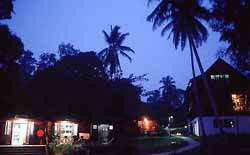
Back at the resort, I meet nature tour guide Mike Chong. We watch a female sambar deer on the lawn; she is so tame she could have been hand reared, and has been visiting for around ten years, accepting titbits from kitchen staff.
Mike suggests checking the fruiting tree for civets. His hunch proves good: we find a common palm civet, feeding in the branches where I watched the morning hornbills.
I leave Mike, and the civet — which has climbed higher in the tree — make a last sweep with my torch beam, then return to my chalet, with a new day, and fresh sightings, awaiting.
[This article appeared in the November/December 1994 issue of Wildlife Conservation.]

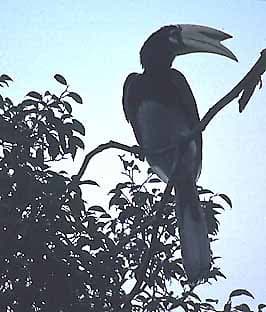 Breakfast with hornbills
Breakfast with hornbills


